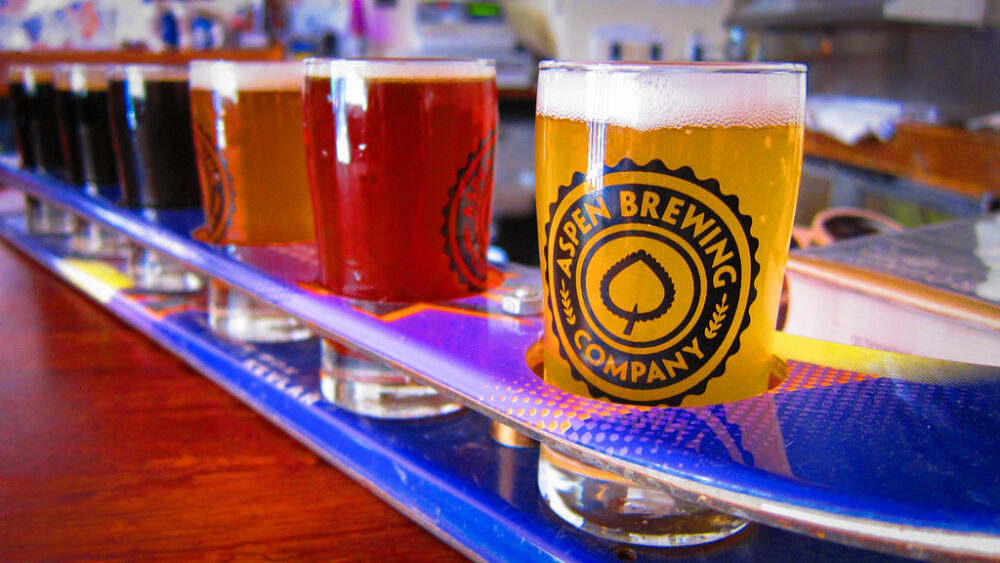No matter what you call it—bier, øl, пиво, ビール, 啤酒, בירה, cwrw—beer is one of humanity’s oldest creations. It is believed that this alcoholic drink has been a staple of civilization since the Neolithic Revolution (c. 10,000 BC), with detailed accounts of large-scale production dating to Old Babylonian Mesopotamia (c. 1800 BC).
However, when dealing with such ancient sources, details become difficult to parse; what exactly constitutes “beer” is nebulous, ranging from any fermented beverage to strictly barley-fermented beverages. In fact, beor, the Proto-Indo European term from which we most likely derived “beer,” may have at one point described mead, a honey-based beverage, not traditional beer.
This raises an important question: What exactly is beer? As discussed, historically, several fermented drinks could have been described as beer, but the modern definition, and the definition we shall use for this article, is more exact. Beer, almost universally, refers to alcoholic, cereal-based, yeast-fermented drinks flavored with hops.
Beer, almost universally, refers to alcoholic, cereal-based, yeast-fermented drinks flavored with hops.
In Western societies, beer is primarily made from malted barley, though it can really be made from any grain. Beer is divided into two main categories, ales and lagers, the differences between which being subtle but important. Regardless of the type, all brewing has the same key steps.
Aside from acquiring the desired cereal for the beer in question, the first step is usually malting, the process of steeping the cereal in lukewarm water for several days to let it germinate, after which it is dried. The purpose for doing this is to stimulate the production of enzymes such as 𝛼- and 𝛽-amylase, which will soon become important.
Next, the malt (or raw grain, if the cereal is not malted) is milled and mixed into a water vat called a mash tun in a process called “mashing-in.” The mixture, now called mash, is slowly and carefully heated to stimulate enzymatic action, breaking down the starchy grain into simple enough sugars for the coming yeast. High-glucose cereals (e.g. maïze, oats), called adjuncts, may or may not be added to later help fermentation.
Humulus lupulus, better known as hops, is now added to the mash, which is then boiled. Boiling serves to deactivate the aforementioned enzymes and to steep the hops, ceasing the breakdown of sugars and imbuing the mash with the hops’ flavor. Hops are the primary bittering agent of beer and are known for their bright, floral flavor.
The mash is then emptied into another vat called a lautering tun. Lautering is the process of separating the soluble and insoluble components of the mash. The solids, called dregs, are removed and often sold as fertilizer, while the liquid, now called wort, is transferred to a fermentation vat.
Here is where the yeast comes in. Saccharomyces sensu stricto (brewer’s yeasts) is a gargantuan family complex, but we shall only look at two for beer brewing. The first, S. cerevisiae, is the most common yeast strain used for making ales and fares better in warmer temperatures. The second, S. pastorianus, is used in lagers and fares better in cooler temperatures.
The yeast is added and the wort will continue to be constantly monitored for optimal temperature and humidity for its yeast. The yeast will continue to convert the enzymized sugars, mostly maltose and glucose, into ethanol (alcohol) and carbon dioxide until the wort, now beer, becomes poisonous to the yeast, at which point they die and settle in the fermentation tank. Ale yeast settles at the top of the tank (“top-fermenting”), while lager yeast settles at the bottom (“bottom-fermenting”).
At every stage of production thus far, the slightest contamination could irrevocably alter or ruin the final product.
It is critically important to note that, at every stage of production thus far, the slightest contamination could irrevocably alter or ruin the final product. Moreover, every brewery alters each step to fit its local traditions and to reach a desired product. These seemingly insignificant differences account for the spectrum of beer seen today, from IPAs (a pale ale) to Schwarzbier (a dark lager).
The final steps differ the most drastically depending on the specific style of beer being manufactured. Depending on location, tradition, and preference, a brewer may age a beer further, or stop it early; may filter the yeast out, or leave it in; may bottle it individually, or insist it be a draught.
Beer, being such an ancient tradition, differs greatly from country to country, town to town, and even person to person. Though seemingly basic, beer brewing is as varied and culturally significant as each one of us, whose product continues to be one of the most popular drinks on the planet.
FEMS Yeast Research (2008). DOI: 10.1111/j.1567-1364.2008.00433.x
Handbook of Food Products Manufacturing (2006). DOI: 10.1002/0470113553
